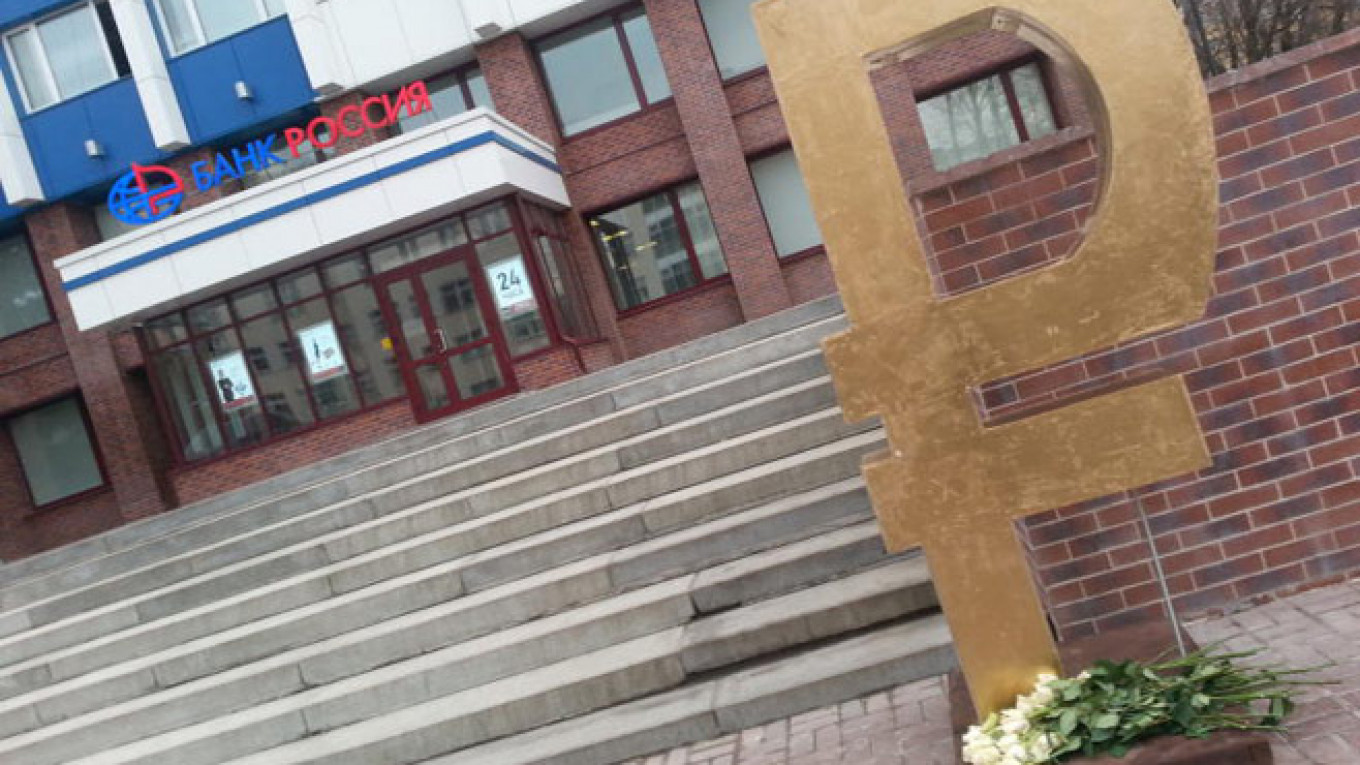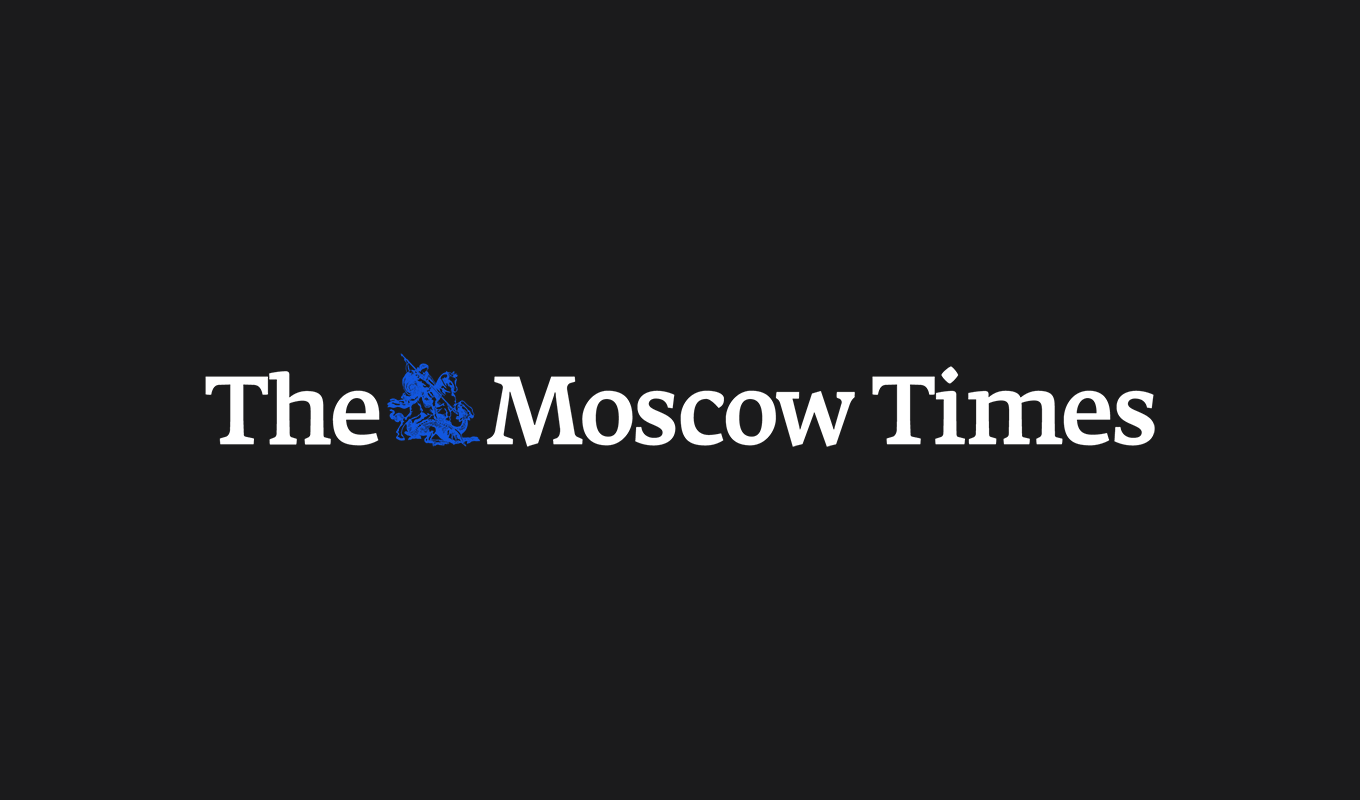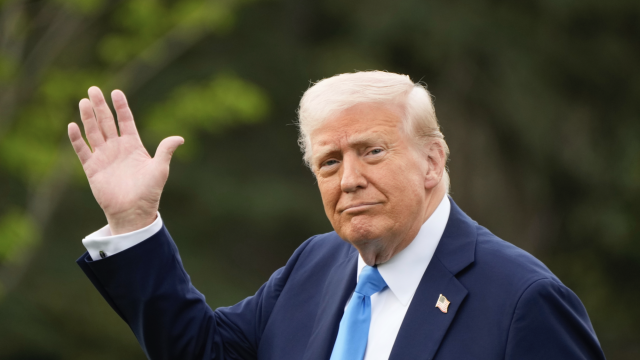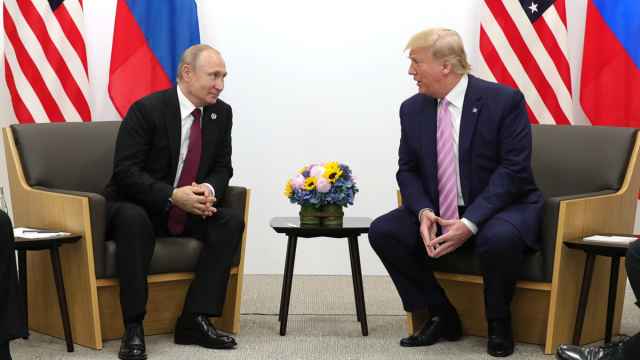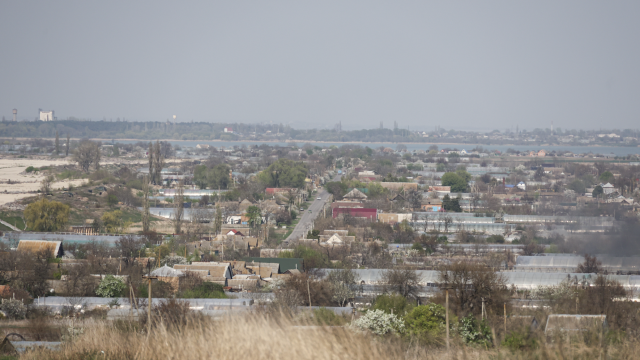As the ruble weakens to record lows against the dollar and euro, Russia's Central Bank is preparing to let it float free, likely leading to a short-term inflation hike and further devaluing the currency, financial analysts said Tuesday.
In the long run, however, the removal of currency controls will lead to a healthier economy that favors sustained investment rather than speculative trading, they said.
An economic slump and six months of crisis in Ukraine have caused the ruble to devalue sharply. At 7 p.m. on Tuesday the ruble was trading at 37.45 to the dollar, just short of the record of 37.5 to the dollar it reached on Monday. The Russian currency was at 42.7 rubles to the dual-currency euro-dollar basket the Central Bank uses to monitor the ruble's value, close to the 43.3 ruble historical maximum set in March. The Central Bank said it would start buying currency to support the ruble if it weakened to 44.4 rubles to the basket.
The Central Bank in 2005 introduced a dual-currency basket consisting of the U.S. dollar and the euro as an indicator of its exchange rate policy. It also set an operational corridor for interventions in case of exceptionally high dual currency fluctuations.
On Aug. 18 the width of the corridor was expanded from 7 rubles held since July 2012 to 9 rubles. Because about a third of consumer goods on average across Russia are imported, the currency exchange rate regulated within the corridor has a large impact on the rate of inflation.
The ruble is trading mostly on news from Ukraine, which accuses Russia of supporting separatists in its restive eastern regions, analysts at investment bank Sberbank CIB wrote in a note on Tuesday.
"Pressure was added by Ukrainian President Petro Poroshenko's comments that Russia is winning the war against Ukraine, and Ukraine is now shifting to defending itself rather than trying to regain the eastern regions. News that sanctions could be extended to Russian government bonds and access to SWIFT pushed the ruble still weaker," the statement said.
EU leaders are discussing further sanctions on Russia this week, though Reuters reported on Tuesday that cutting Russia off from SWIFT, a key global interbank messaging service, had been taken off the table as too radical.
With the ruble exchange rate highly volatile, this seems like a bad time to continue with plans to reject market interventions and free-float the ruble, an idea first mooted by the Central Bank in 2010. But Russia's financial authorities are sticking to their guns.
In an article published Tuesday in monthly economics magazine Voprosy Ekonomiki (Economic Questions), Central Bank first vice president Ksenia Yudayeva said the regulator will go ahead with plans to scrap concept of a interventions-supported trading corridor within which the ruble is allowed to trade and instead turn to inflation targeting starting from 2015.
Under inflation targeting, the Central Bank will regulate inflation by modifying its key lending rates while allowing the domestic currency to float freely on the market.
The Central Bank's long-term inflation target is 4 percent, far below the 7.5 percent predicted for this year by the Economic Development Ministry in its latest estimate.
"On the one hand it [the Central Bank] has to push down inflation, which is spiraling because of Western sanctions and the weakening ruble," said Finam analyst Anton Soroko. "On the other, the long-discussed task of free-floating the domestic currency still has to be solved," he said.
But that solution is not too far off. The ruble is already de-facto in free float, said Alexei Yegorov, a debt market analyst at PSB Research.
At the start of the year, the Central Bank spent billions to slow the weakening of the ruble. The ruble is now worth 14 percent less than on Jan. 1, but the Central Bank has recently given freer reign to the currency by widening the range in which it is permitted to trade and has not sold foreign currency to balance out declines in the rubble's value since May, Yegorov said.
Directly supporting the domestic currency only benefits speculators who invest in the stock market, heat it up, then sell assets and exit the market into foreign currency, he added.
"The Central Bank's key lending rates are what sets the target for long-term investment," Yegorov said, adding that he expected the bank to raise its rates from the current 8 percentage points to 9 percent or even higher.
Dmitry Savchenko, chief analyst at Nordea bank, approved of the move to inflation targeting but said it could lead to short-term rises in inflation.
"Maybe it should have been done more smoothly and after the geopolitical risks decreased," Savchenko said. But postponing the measure would still have not helped the weakening ruble, he added.
"The ruble today is so volatile that it may once again break the records. And the dip could be quite deep," the analyst said.
Contact the author at a.panin@imedia.ru
A Message from The Moscow Times:
Dear readers,
We are facing unprecedented challenges. Russia's Prosecutor General's Office has designated The Moscow Times as an "undesirable" organization, criminalizing our work and putting our staff at risk of prosecution. This follows our earlier unjust labeling as a "foreign agent."
These actions are direct attempts to silence independent journalism in Russia. The authorities claim our work "discredits the decisions of the Russian leadership." We see things differently: we strive to provide accurate, unbiased reporting on Russia.
We, the journalists of The Moscow Times, refuse to be silenced. But to continue our work, we need your help.
Your support, no matter how small, makes a world of difference. If you can, please support us monthly starting from just $2. It's quick to set up, and every contribution makes a significant impact.
By supporting The Moscow Times, you're defending open, independent journalism in the face of repression. Thank you for standing with us.
Remind me later.


